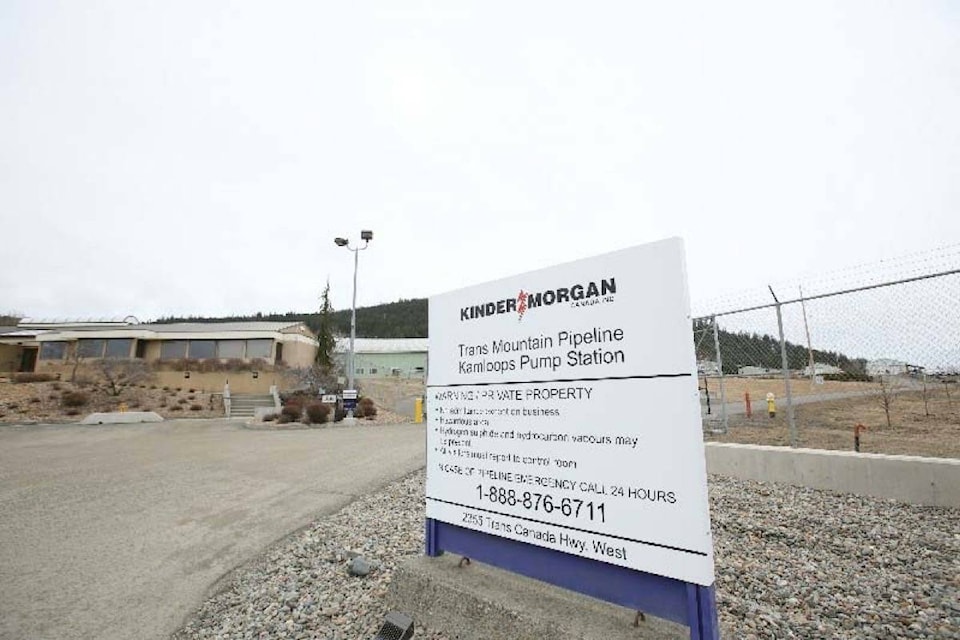British Columbia consumers could be ‘collateral damage’ in the ongoing pipeline battle between British Columbia and Alberta, says petroleum analyst Dan McTeague with gasbuddy.com, and those living in the Kootenays would not be exempt.
The way the gas and oil distribution system works, the Kootenays and much of the Okanagan get 100 per cent of their supply from the Trans Mountain pipeline, which delivers to a terminal in Kamloops, McTeague says. It is trucked from there.
“100 per cent of Kootenay gas is carried through Trans Mountain. The prices you pay in, say Kimberley, reflect what it costs to get the fuel from Kamloops,” he said. “We’ve always taken that supply for granted.”
If the pipeline supply was cut off, the Kamloops terminal would have to rely on truck and train shipments, and an immediate price jump of at least five cents a litre would be the result, McTeague says.
The Alberta government passed legislation this week that would allow it to curb the flow of oil and gas to B.C. if the opposition to the pipeline expansion doesn’t end. Not only could they stop the flow, they almost have to, McTeague says.
McTeague says that Alberta’s oil sands industry is producing at capacity and the province needs to sell that heavy oil. If the pipeline is not expanded, then more of its current capacity will be needed to send heavy oil to markets, meaning less capacity for other fuels.
“If Kinder Morgan says it’s not building the expanded pipeline, Alberta would make good on its threat. They will likely repurpose the pipeline to carry more heavy oil. Heavy oil gets the priority. For B.C.’s gas? Go find it yourself.”
“There is a small refinery in Prince George, but how far away from the Kootnenays is that? You’re looking at trucking from there, which is inefficient and more expensive, if there are enough trucks available.”
The Lower Mainland gets 65 per cent of its gas supply through Trans Mountain.
“There is one tiny refinery (Parkland) in Vancouver that supplies them as well,” he said. “But much of their fuel, what they need to run the refinery, runs through the Trans Mountain. So if you impact that source, there will be less gas produced. Vancouver would lose two thirds of its supply.”
Vancouver also gets about 15 per cent from Washington state.
A pipeline cutoff, McTeague says, will see gas prices of over $2 per litre in Vancouver.
Alberta is not making idle threats, he says. In order to move their heavy oil, they have to reduce the flow of gas, if the pipeline is not expanded.
The Trans Mountain line is also a key supplier of jet fuel to Vancouver International Airport.
“Someone in Victoria has to wake up,” he said. “It’s a game of chicken and B.C. has a lot to lose.”
Prices in this area and in Vancouver did jump this week — in Kimberley to $1.36 per litre. That is a result of two of three Edmonton refineries being down for spring maintenance, McTeague says, and not because of the pipeline spat.
“Those prices should drop back down in two weeks as the refineries come back online.”
But it is a good example of what happens almost immediately when supply is slowed.
Trans Mountain pipeline
The current Trans Mountain Pipeline System, in operation since 1953, spans approximately 1,150 kilometres. It starts in Edmonton, Alberta and terminates on the West Coast of British Columbia in Burnaby. Twenty-three active pump stations located along the pipeline route maintain the line’s 300,000 barrel per day (bpd) capacity flowing at a speed of approximately eight kilometres per hour. In addition to the pump stations, four terminals in Edmonton, Kamloops, Abbotsford and Burnaby house storage tanks for incoming feeder pipelines and tanker loading facilities.
Each component of the system performs specific tasks to keep North America’s only pipeline system to the West Coast operating safely and efficiently. The pipeline ships products through a process called batching, allowing multiple products, including crude oil, refined and semi-refined products in batches one after the other through the line for different shippers.
As product flows through the pipeline, conditions such as elevation change, fluid friction and the delivery point change the pressure along the pipe. All these factors determine the optimum location of pump stations and even changes in diameter of the pipeline to optimize performance and, in some situations, lessen the demand for additional pump stations to maintain the flow rate. The current pipeline consists of 827 kilometres of 24-inch pipe, 150 kilometres of 36-inch pipe and 170 kilometres of 30-inch pipe.
Source: https://www.transmountain.com/facilities
